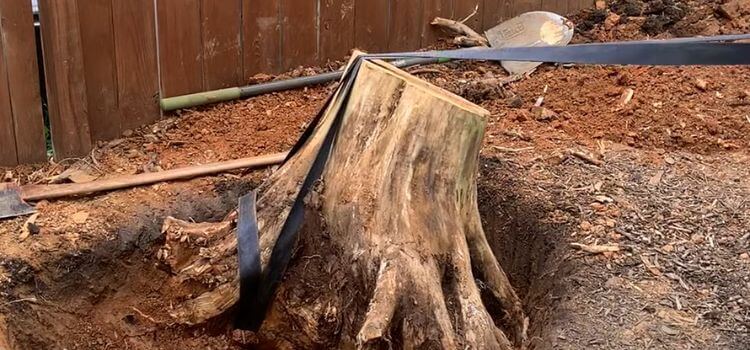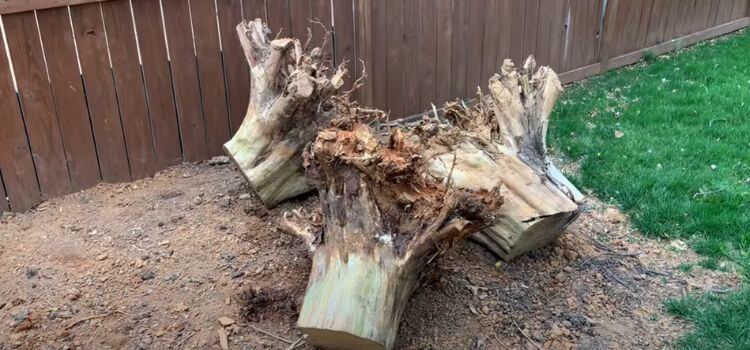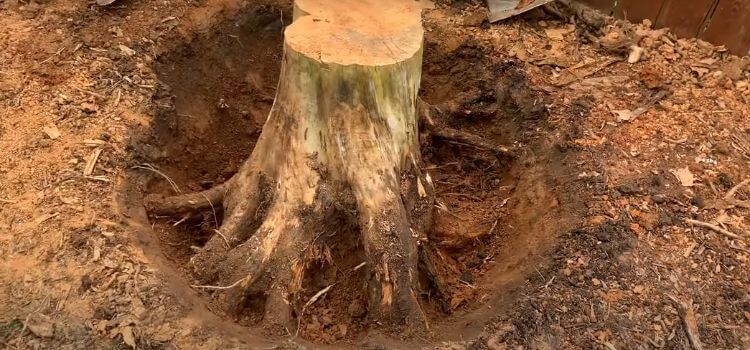As an Amazon Associate, I earn from qualifying purchases.
Arborvitae are famous hedges, privacy screens, and ornamental plantings due to their adaptability and beauty. The natural stump of an arborvitae plant, after it dies or is removed for repair, can be an eyesore.
Here’s a seven-step method to securely and quickly remove an arborvitae stump from your landscaping. This guide will help experienced gardeners and homeowners recover their outdoor areas.
Step 1: Assess the Stump
To begin, assess the size and condition of the arborvitae stump. Is it large or relatively small? How deeply is it rooted, and does it have multiple stems or a single leader? These factors will dictate your approach and the tools you’ll need. Managing a smaller stump is easier compared to a giant, more substantial one, which may require more labor and time.
Step 2: Gather the necessary tools and equipment.
The right tools are crucial to the success and safety of this endeavor. To remove an arborvitae stump, you will need:
- Safety goggles and work gloves
- Chainsaw or reciprocating saw
- Hand saws or pruners
- Pickaxe and mattock
- Heavy-duty shovel
- When it comes to chopping wood, should you use an axe or a splitting maul?
- Tow strap or chains (optional for stubborn stumps)
Ensure all your tools are in good condition and appropriate for the job. The right tools make the job easier and prevent mishaps from occurring when working with poor equipment.
Step 3: Clear the area
Security should be the primary concern when working around a stump. Clear the work area of any objects that could pose a tripping hazard or get in the way. To ensure safety and a clear workstation, scrape away rocks and debris surrounding the stump.
Step 4: Cut the stump
Using the appropriate saw for the size of the stump, cut the trunk as close to the ground as possible. The purpose is to create a flat character that will make the next steps more manageable. For a level cut, trim the stump if it is close to the ground.
Step 5: Dig Around the Stump

Dig a trough around the stump, exposing the outermost roots. The trench should be a foot from the stump and deep enough to reach the root ball. Carefully sever any visible roots as you go, which will loosen the stump and prepare it for extraction.
Step 6: Remove the roots
With the majority of the stump exposed, begin removing the roots systematically. Use the ax or splitting maul to cut through the more extensive roots. For smaller roots, a handsaw or pruner will suffice. Always work away from the central stump, taking care not to damage any underground utilities if they’re nearby.
For tough roots, especially those bound to other trees or near a structure, use a tow strap or chain. Loop the strap or chain around the root and attach it to a vehicle or another stable anchor. With notice, this can help pull the root more easily from the ground.

Step 7: Fill the hole
After removing the stump and roots, fill the hole with soil. Tamp down the soil to ensure it’s compact and level with the surrounding ground. This will help prevent any depressions in your yard and ensure the area is safe to walk on.
Filling the hole with compost or other organic debris improves the soil, benefiting plants and protecting the landscape.
How to Remove Arborvitae Stumps: Frequently Asked Questions
The most effective ways to remove an arborvitae stump are with a stump grinder and chemicals or by hand. The best method depends on the size of the stump and your comfort level with the technique.
You can remove a little arborvitae stump with a shovel, ax, and some labor. Removing huge stumps securely requires vital instruments like stump grinders.
Late fall or early spring is usually the best time to remove an arborvitae stump. In specific periods, soil moisture is more consistent, making digging easier and chemical treatments more effective.
If the entire root system is not adequately removed, arborvitae stumps can regrow. To prevent regrowth, make sure to remove as much of the root system as possible during the stump removal process.
Conclusion
Maintaining a beautiful and valuable outdoor space requires removing an arborvitae stump, which can be difficult. Always approach the task methodically and prioritize safety.
Professional tree services may be better suited for removing some stumps, especially those near structures or with extensive, hard-to-reach roots. With these instructions, you can confidently tackle this task and enjoy a well-groomed yard once again.

